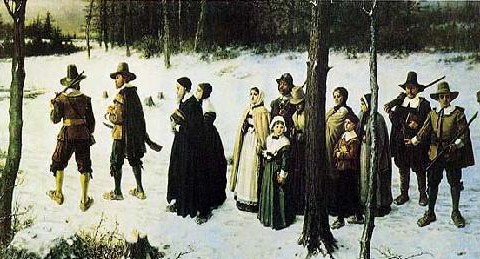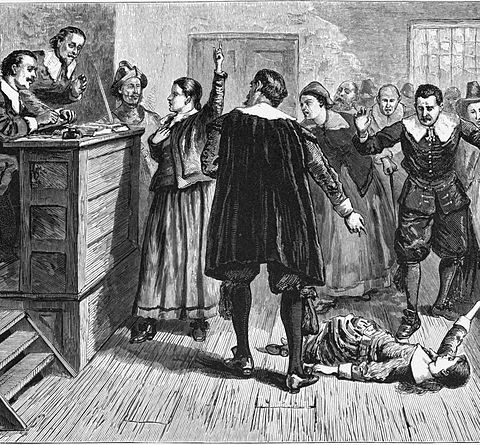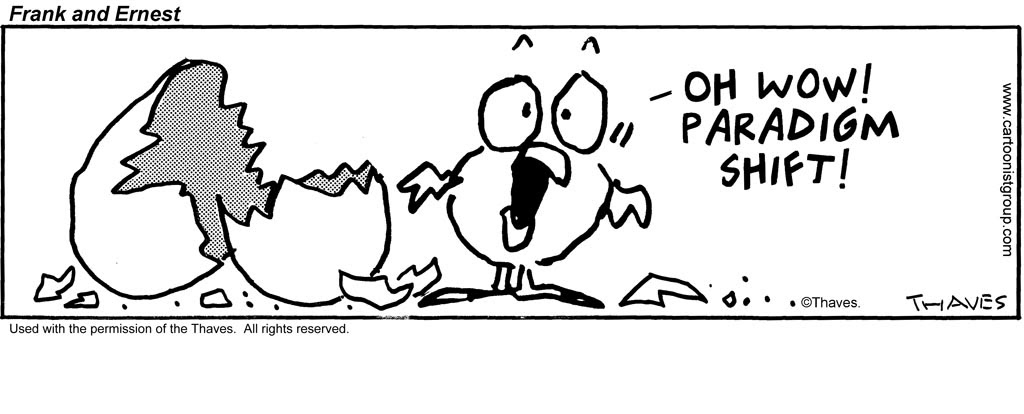Do you really know American history?
What impressions come to mind when you think about the Puritan colonists who settled in New England? How would you describe them?
As a child, my thoughts about the New England colonists were shaped almost exclusively by the Thanksgiving holiday. I knew they traveled to America aboard the Mayflower. They wore tall black hats and buckled leather shoes, and once, they held a big feast together with native inhabitants to give thanks to God for a bountiful harvest.
 By the time I finished college, this simple image had both expanded, and become almost entirely negative. What changed? Frankly, I don’t recall reading that much about the New England colonists during my 16 years of formal schooling. (Schooling, that is, not education; there is a difference.) No doubt, I didn’t pay as much attention as I should have to lectures on the subject, and I may have skimmed some reading assignments. That said, I recall at least three sources of information that fed into the negative image: I studied in some detail the infamous Salem Witch Trials. I read a terrifying sermon from Jonathan Edwards titled “Sinners in the Hands of an Angry God.” And I studied Nathaniel Hawthorne’s famous novel, The Scarlet Letter.
By the time I finished college, this simple image had both expanded, and become almost entirely negative. What changed? Frankly, I don’t recall reading that much about the New England colonists during my 16 years of formal schooling. (Schooling, that is, not education; there is a difference.) No doubt, I didn’t pay as much attention as I should have to lectures on the subject, and I may have skimmed some reading assignments. That said, I recall at least three sources of information that fed into the negative image: I studied in some detail the infamous Salem Witch Trials. I read a terrifying sermon from Jonathan Edwards titled “Sinners in the Hands of an Angry God.” And I studied Nathaniel Hawthorne’s famous novel, The Scarlet Letter.
Studies of American history generally tend to lump the New England colonists with other European migrants in terms of how they treated native inhabitants. They were greedy, ethnocentric people who used their “guns, germs and steel” (to borrow the provocative title of Jared Diamond’s book) to steal land and oppress Native Americans.
By the time I’d finished college, I had the same basic view of these “WASPS” (white Anglo-Saxon Protestants) as most of my teachers and friends. They were oppressive religious fanatics. In other words, they were “puritanical,” a derogatory slur still used to describe such people.
Several years later, for various reasons, my interest in the Puritans was rekindled when I read books I hadn’t been exposed to in school. Books like “Of Plimouth Plantation” by William Bradford, one of Plymouth Colony’s first governors. Bradford intrigued me. He was certainly devout, but didn’t seem “puritanical.” His courage, perseverance, wisdom, and willingness to sacrifice for the good of others (Native Americans included) deeply challenged my stereotype.
I wanted to know more, so I read an excellent biography of Bradford by Professor Gary Schmidt of Calvin College (William Bradford: Plymouth’s Faithful Pilgrim) which only deepened my appreciation for this flawed but heroic man. I also read Puritan colonial leader John Winthrop’s famous sermon, “A Model of Christian Charity,” and was profoundly inspired. Next came “Jonathan Edwards: A Life,” by the renowned historian George M. Marsden. I discovered that Edwards was perhaps the finest theologian America has ever produced, and yet I knew almost nothing about him. I was moved by his vibrant, passionate faith, so I started reading books by Edwards himself, such as “The Life and Diary of David Brainerd,” a heroic young missionary who gave his life to share Christ with the Delaware Indians. I also read about William Penn and the Quaker settlement of Pennsylvania, fascinated by how they lived peaceably with the native inhabitants, even refusing to defend themselves when attacked.
At this point I was hooked. I moved on to studying the Puritan movement in England. I read Bunyan’s Pilgrim’s Progress. I read histories of John Wesley and George Whitfield, and how God used them (along with Jonathan Edwards) as catalysts for the First Great Awakening on both sides of the Atlantic. I read books of theology by and about the Puritans, including parts of J.I. Packer’s, A Quest for Godliness: The Puritan Vision of the Christian Life.
Over time, my impression of America’s Christian colonists transformed. Certainly they were flawed people, but compared to me, they were spiritual giants. I came to see that so much of what is good, true and beautiful in America is traced directly back to these people, their distinctly biblical worldview, and the institutions and culture they established.
As I look back now on my formal schooling, I realize I wasn’t taught history as much as a particular narrative. In the first post of this series, I briefly described the concept and characteristics of such narratives. My schooling in colonial New England’s history provides a good example of how such narratives function.
First, this narrative has defined characters and an unambiguous distinction between good and evil, oppressor and oppressed. The evil oppressors are the Puritans. The oppressed victims are the Native Americans. The heroes are modern-era academics and historians who are setting the record straight in their enlightened criticism of America’s colonial era.
 Second, this narrative provides an excellent example of distortion. It is based on a degree of truth: Yes, the Salem Witch Trials tragically happened. Yes, there are heartbreaking examples of Puritan colonists inhumanely treating Native Americans. Yes, the Puritans could fall into the snare of Pharisaical self righteousness. But is this the whole picture? Not even close.
Second, this narrative provides an excellent example of distortion. It is based on a degree of truth: Yes, the Salem Witch Trials tragically happened. Yes, there are heartbreaking examples of Puritan colonists inhumanely treating Native Americans. Yes, the Puritans could fall into the snare of Pharisaical self righteousness. But is this the whole picture? Not even close.
In the end, the picture that the narrative paints leaves out so much information as to be intentionally deceptive. Only those facts that support the narrative are presented. Those that challenge it are ignored. Thus, I was never exposed to a book as basic to understanding the period as “Of Plimouth Plantation,” and was assigned to read only one sermon by Jonathan Edwards (the one, not surprisingly, that most closely aligned with the narrative). Yet Edwards wrote prodigiously, and his writings shaped the course of American history, but no matter. It also explains why I was never exposed to the remarkable social and cultural transformation that resulted from the First Great Awakening. I knew very little of this history and virtually nothing about its central figures, John Wesley and George Whitfield— and my college major was history! I would only learn about this history many years after graduating.
What happened to the teaching of American history in the 1950s?
If narratives are tools used to accomplish a purpose, what is the purpose of this particular narrative? Why did the teaching of American history in general change so dramatically starting in the 1950s? Who was behind this change, and what was their agenda?
I’m still trying to understand this. In part, it can be explained simply by the worldview shift in America to secular-atheism. This worldview was already established in the humanities departments of nearly all of our major universities when I was in college more than 20 years ago, and is even more so now. Then, and now, “Critical Theory” replaced the study of Western Civilization. Its roots go back to the 1930s and the Frankfurt School social theorists.
Just this week I learned that the powerful and influential College Board’s newly-issued curriculum for its Advanced Placement European History (APEH) reflects this same highly distorted, inaccurate teaching of history. The editors of The National Association of Scholars described this new standardized high school curriculum this way: “Much of the European past goes missing … Columbus is absent, and Churchill is reduced to a single prompt. The College Board tells the story of European history as the triumph of secular progressivism, and shunts to the margins the continent’s centuries-long rise to political freedom and prosperity.”
Reflecting back now on my formal schooling, I believe I was manipulated more than educated when it came to history. This contributed significantly to the decision of my wife and me to home school our children. I wanted them to know their heritage accurately—the good, the bad and the ugly. I wanted to expose them to books like Bradford’s Of Plimouth Plantation, as well as the many other books, sermons, people, and ideas that had been withheld from me because they didn’t fit the narrative.
We’ll continue the examination of narrative in the next post in this series, looking at why narratives are so pervasive today, and what makes them such an effective tool of social change.
- Scott Allen






